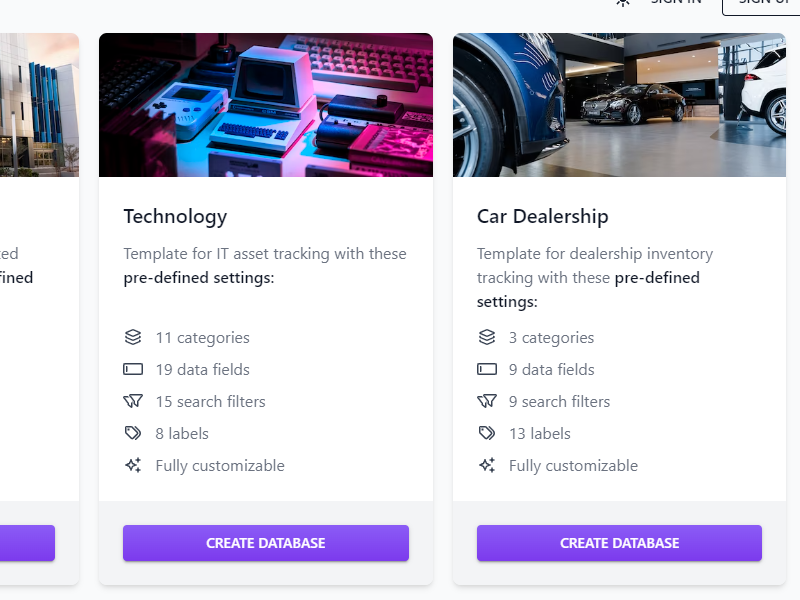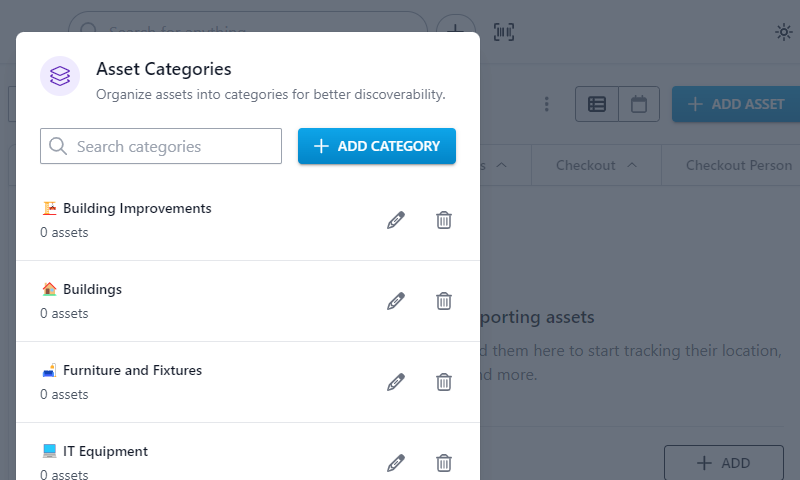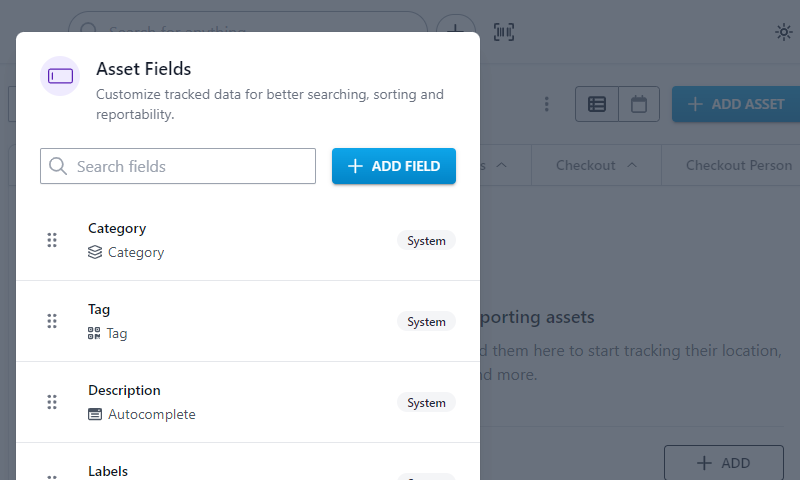Setting Up Your Database
An Assetbots database is the primary workspace containing all your data – assets, people, checkouts, integration settings and more. Databases can have multiple users, and users can participate in multiple databases.
Most organizations maintain a single database, but some like Managed Service Providers (MSPs) or large enterprises with multiple departments or locations have many.
Visit the New Database page to create a new database. You can choose from one of four templates (available to our Growth and Scale customers):

Business
A good starting point for businesses tracking a variety of fixed assets, from furniture and equipment to computers and laptops.
Technology
If you are focusing on IT Asset Management (ITAM), the technology template is a great starting point with detailed information across multiple IT asset categories.
Car Dealership
To track common workflows for your on-lot and showroom dealership inventory, this template is a good place to start.
Empty
Start from scratch and configure everything yourself.
No matter which template you choose, everything in your database is customizable. Once created, we recommend that you immediately add a few assets and people to get a feel for how everything works.
Next, customize your database to better meet your needs.
Categories
Asset categories can be managed from the More actions menu next to the Add asset button in the asset list view. Add, remove and edit the categories of assets you will be tracking.

- Review the category list and remove any that are not needed. Rename any to use the vernacular used by your organization.
- Decide on a tagging scheme. Default categories are set to auto-generate asset tag IDs with random characters. Note that if you decide to switch to sequential tagging, the sequence number is global to your database and not per-category. This is to prevent accidentally duplicating tag IDs across categories. Review our guide to asset tagging best practices to learn more.
- Turn fields off that are not relevant for each category. For example, if you have a Processor field, you might want to turn it off for your Displays category, as you probably don’t care what kind of processor powers your displays.
Additional tips:
- Each time a category is created an associated Filter will also be created that filters assets to that category only. These filters will also have their table columns set to the fields enabled for that category.
Fields
Fields can be customized for many records in Assetbots, including assets, people and locations. To edit your fields, use the More actions menu next to the Add button in the record’s list view. Add, remove and edit the fields you would like to track.

- Review the field list and remove any that are not needed. Rename any to use the vernacular used by your organization.
- Add fields for additional data you would like to track. For fields with a limited range of options, choose Single Option if the options change rarely (e.g., Department) and Autocomplete if the options are dynamic or should be built-up over time.
- Sort the fields using the grippers on the left into your preferred order. This order determines the default order columns appear in the list view as well as the order the fields appear in the detail view.
Additional tips:
- To track expiring warranties, make sure you have an asset Date field for that (e.g., Warranty End Date).
- To track depreciation, make sure you have at least an asset Money field for Cost, a Date field for Acquire Date, and a Duration field for Lifespan. If necessary, you can also add a Money field for Salvage Value and a Depreciation Method field to use a method other than Straight Line. Review our guide on depreciation to learn more.
- Both above scenarios are included in the Business and Technology templates by default.
